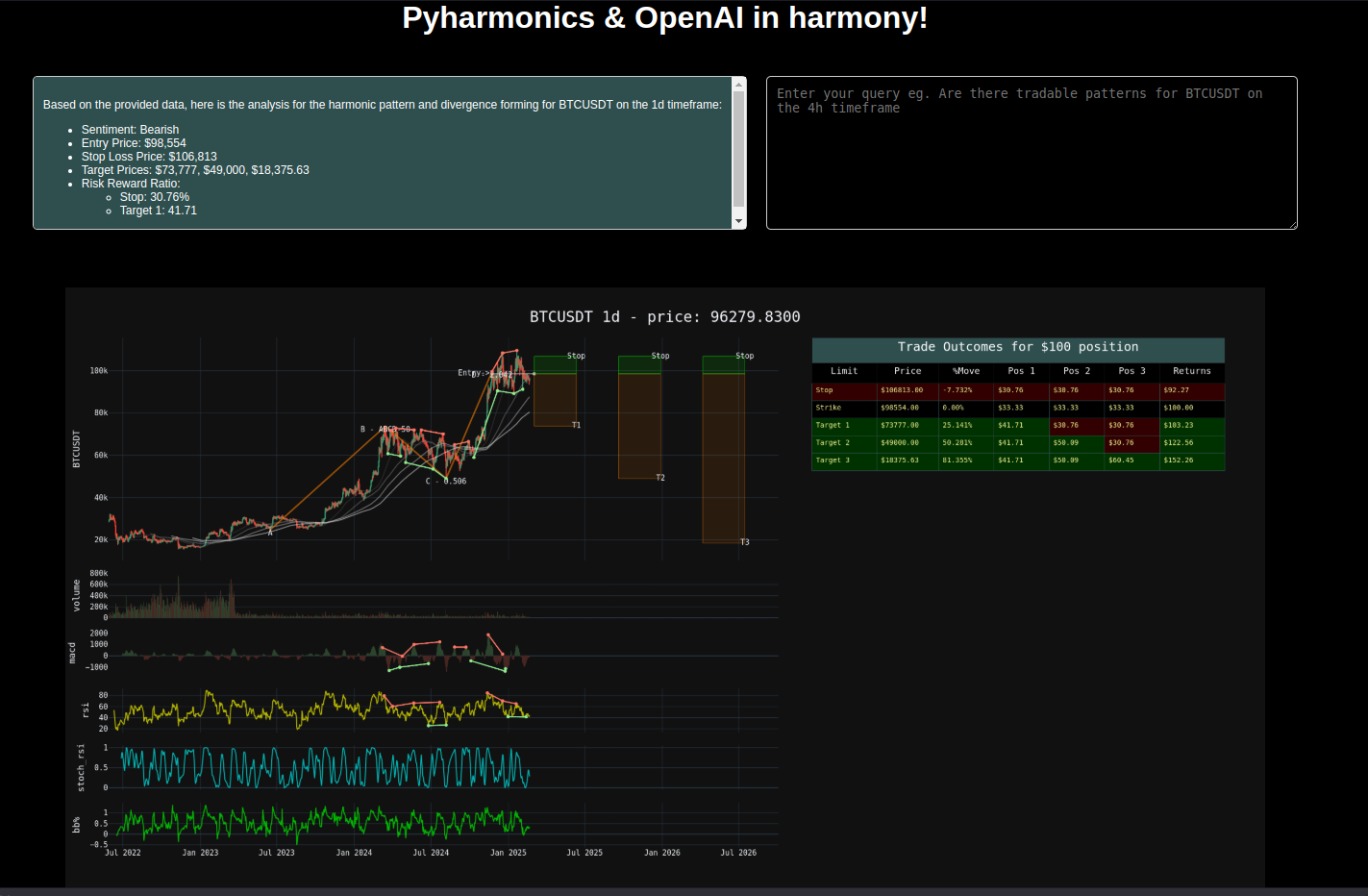Pyharmonics + GPT - Trading tools integrated with AI
Table of contents
Abstract
Harmonics play a fundamental role in signal processing, power systems, and music theory. More importantly, they form the foundation of technical analysis in financial markets, particularly in identifying Fibonacci-based harmonic patterns. However, extracting meaningful insights from these patterns can be complex. PyHarmonics is an advanced Python library that simplifies harmonic analysis, making it more accessible and insightful for developers. When integrated with OpenAI’s GPT models, it becomes a powerful tool for market analysis, helping investors make informed decisions and protect their investments.
Methodology
In the OpenAI approach, we use prompt engineering to add extra context (meaning) between the user prompt and the GPT model. This enables us to translate the user’s request into a structured API call.
PyHarmonics generates a large JSON output that identifies significant points in a trend and groups them into recognizable patterns. However, this raw data is not easily interpretable by humans. To bridge this gap, we apply a second layer of prompt engineering, instructing GPT to translate PyHarmonics’ output into a more human-readable format.
Additionally, by leveraging Hugging Face embeddings, we can process documents that describe how to interact with the API. These embeddings allow us to semantically search the documentation using the user’s prompt, enabling a similar API call process. The results are then expressed in the same intuitive way, ensuring seamless user interaction.
Results
The results are a a rich graphical representation of the data coupled with a bullet point breakdown. learn more at https://github.com/niall-oc/pyharmonics-gpt and https://github.com/niall-oc/pyharmonics
